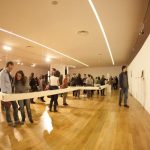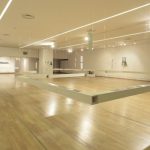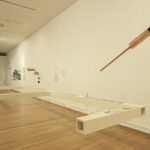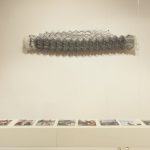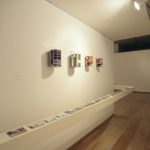An exhibition and a catalogue with 14 projects that have their first concrete achievements in the creation of public space, heritage protection, creating centers of independent cultural and social projects.
The goal
This selection suggests 14 effective models of recovery – of abandoned spaces, the identity of a place, certain techniques and good practice, ways of dealing with our environment – promoting thus a culture of urban civic activism. The exhibition brings together the energies, experience, memories, questions and perspectives of people understanding that the fate of the place they live in is up to them.
They are all independent projects, initiated by professionals of the city, design groups, entrepreneurs or nongovernmental organizations: people who get together for a common cause. They do not follow a commission, yet aim at sorting out difficult issues, often of immediate and vital public interest. They usually shortcut institutional systems, and sometimes some of them turn into institutions. They are all long term projects and have already gone successfully through a stage, and won a battle. Beyond their precise, clear purpose, all of them aim at working as an impulse for future actions, reverberating as good practice models; and change the way of thinking in time.
Each initiative manages to regenerate existing local communities, motivating them to take part in actions beneficial to all, or builds up other communities, coming up with new ways of using a city. They challenge people to get away from passiveness and interact with each other – a first and vital step of the activation process. Besides the mere intervention, the communities get confidence in their own forces and in the concept of improving their lives on their own.
The Exhibition
Held at MNAC (The National Museum of Contemporary Art), on the 2nd floor shared by a provisional wall with the exhibition “Young Architects in Germany” brought to a same event, the Zeppelin Festival. A “white box” area in half a room to which an accessible-behind-toilets appendix has been added. It had to be put together 14 extremely different projects such as: Verona street pedestrian project, alternative projects to Bucharest and Roșia Montană disruptions or projects for the preservation of Oltenia wooden churches, Craiova Cluj independent cultural centres, community projects in difficult areas and so on.
At the beginning, we were all thinking of some large printouts, box and panel mazes, large texts exhibited on the walls…. it was completely wrong. We are talking here about small projects (or which at least start so), the smartness of using resources, do things together and build projects. We have rather reset our way of thinking towards minimizing instead of expanding: we do not have any big images; on the contrary, we have many small photos glued on a hanging plywood pipe-system. Explanatory notes associated with every project are printed on small format cards that hang from each of the wires supporting the pipes. You must get closer to read the notes, and then you can look at the photos that show just stages of some processes instead of grandiose endings.
We have had some heated technical discussions within the team about the pipes: whether they could be hung and would not swing erratically. Attaching one another in bunches makes them stiff enough, at the same time allowing them some horizontal idleness. On the walls, next to each project, “witnesses” of the operations were set: products of Ţibănești blacksmith, a paddle pertaining to “Canotca” project, some seats got back from demolitions, some paving stones, and also two precious frescoes from Oltenia wooden churches broken out and restored at the National University of Arts in Bucharest.
Credits & info:
Projects in the exhibition: Verona Operation – Street Delivery; The Paintbrush Factory in Cluj; Club Electroputere; The Ark – Rahova Centre for Creative Industries; Ţibănești – traditional workshops; 60 wooden churches; Urban regeneration – Buzești–Uranus Axis; Ctrl‑S: Roșia Montană; Urban intervention in Ferentari – Livezilor Alley; Magic Blocks; Urban Kalaka; Mureș Face; Interventions in Harghita’s public space; Rowmania & Canotca
Period: 2.11. – 20.12. 2011;
Place: National Museum of Contemporary Art, Bucharest
Context: The exhibition is an event within the “Heritage as resource” program and part of the 2011 Zeppelin Festival
Organizer: Zeppelin Association
Curators: Constantin Goagea, Cosmina Goagea, Ștefan Ghenciulescu, Mugur Grosu, Cosmin Caciuc


